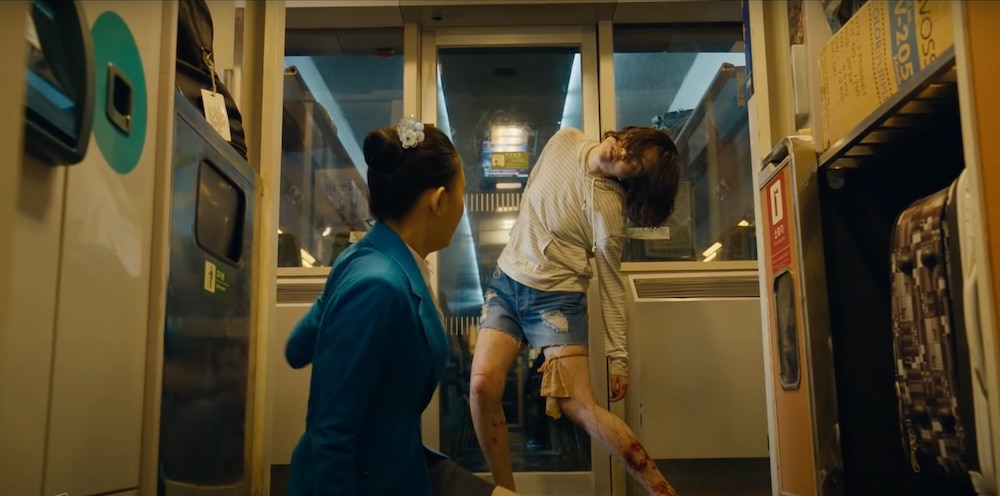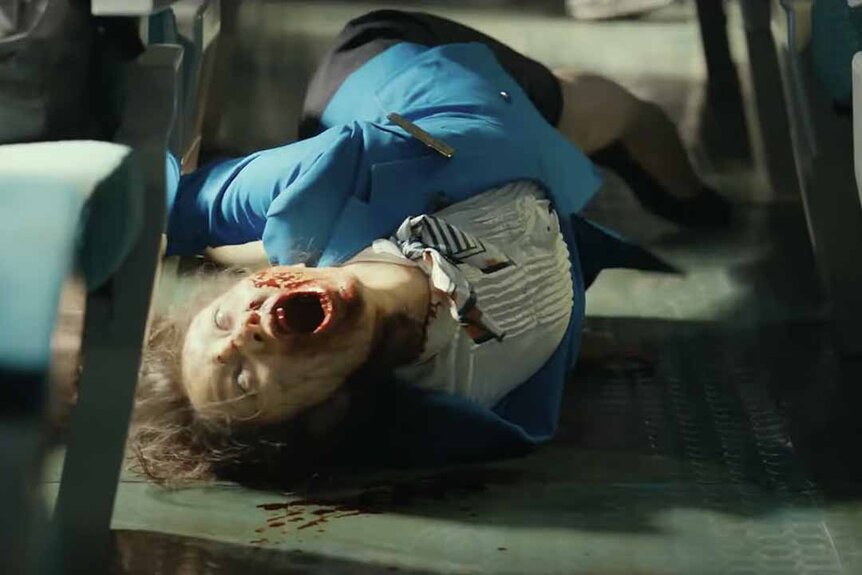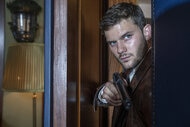Create a free profile to get unlimited access to exclusive videos, sweepstakes, and more!
Train to Busan: The Zombie Classic You May Not Know, but Definitely Should
Train to Busan remains a modern zombie classic that's only gotten more potent in our pandemic-filled world.

For those who had a spiritual horror awakening watching George A. Romero's Night of the Living Dead (1968), you've likely spent a lot of time trying to find a zombie cinema equivalent. Luckily, it's a subgenre that has inspired some fantastic entries into the zombie discourse, from Edgar Wright's comedy Shaun of the Dead (2004) to Danny Boyle's 28 Days Later (2002), and even a Zack Snyder double feature of Dawn of the Dead (2004) and Army of the Dead (2021).
Even the small screen has had its own zombie renaissance with The Walking Dead adaptation, and more recently, the long-awaited adaptation to TV of the seminal horror video game, The Last of Us.
RELATED: Peninsula's first full trailer shows the expanding, zombified world of Train to Busan
However, sometimes, zombie aficionados tend to get a little insular when it comes to seeking out worthy entries into the pantheon by sleeping on Asian cinema, which is absolutely knocking it out of the park in the genre. Standout examples include Japan's Wild Zero (2000) or One Cut of the Dead (2017), and South Korea's speeding train-meets-zombies classic, 2016's Train to Busan (now streaming on Peacock).
Why Train to Busan just gets scarier with each passing year
Eight years after Train to Busan was released in theaters, director Yeon Sang-ho's kinetic and clever take on the sub genre remains so fresh because of its timely premise, incredible staging, and heightened stakes. While it wears its homages on its sleeve, borrowing liberally from Snowpiercer (2013) and World War Z (2013), Busan never feels derivative. Sang-ho gives his own twist on those genre greats, and then further distinguishes his own talents by making them feel so singular to his own film.
RELATED: What Did George Romero Really Think of Zack Snyder's Dawn of the Dead Remake?
Busan's zombie scenario is delightfully pedestrian at the start. Seok-woo (Gong Yoo), a guilt-ridden, divorced dad, promises to take his daughter, Su-an (Kim Su-an), to see her mom in Busan for her birthday. They think they're boarding a typical KTX train, not knowing that South Korea is in the throes of a virulent zombie outbreak... at least until a sick woman jumps aboard and attacks after they've left the station.
Train to Busan takes typical tropes and remixes them into fresh scenarios
The claustrophobic, high speed train setting in the first half of the film allows Sang-ho to place the riders, and the audience, into a claustrophobic tube where there's nowhere to hide from what's unfolding. And in a COVID world where humanity has recently experienced the terror of a relentless illness, the proliferation of the virus from the one woman throughout the train hits even harder than it did eight years ago.
More importantly, Sang-ho bothers to make the people inside the train count. There's effort made for us to get to know the people on the train with Seok-woo, so when the situation gets more violent and dire, there's an investment made in not just the lead and his goal to save his daughter, but in the others also trying to survive. And much like Romero's films in the sub genre, there's plenty of social commentary to be had in the cross section of travelers in the train. Whether it's the gate-keeping of the train attendants or the world-weariness and despair of a character like Jong-gil (Park Myung-sin), there's plenty to frustrate and recognize in the human flaws that become so apparent when the world falls apart.
Train to Busan mashes together the zombie genre and Asian martial arts
Arguably one of the most distinguishing elements of Train to Busan is Sang-ho's inventive staging and blocking of action scenes on and off the train. Inside the cars, the camera functions almost like a side-scroller video game point of view, as it captures the melees that happen in the narrow aisles. The always cramped environment makes the zombies more visceral for the humans, as they have to use props and weapons intimately. Without breathing room, there's always the threat of a bite just inches away from some vulnerable body part.
RELATED: Is 'Warm Bodies' the most optimistic zombie movie ever?
Outside the train, the station may open up the frame, but then Sang-ho just fills it with hordes of turned humans as they fast-zombie their way to fresh prey. The characters have to figure out in real time how to react with what's relentlessly coming at them, while processing the scope of what's happened to the outside world. The carnage is engrossing, shocking, and vastly entertaining, as the dwindling survivors get more desperate and determined.
All of it culminates in a breathtaking ending that serves both masters: the horror lovers and those who want to invest in the plight of the characters. It's affecting and resonant, which is the hallmark of the best of the zombie genre.
Watch Train to Busan on Peacock today!



























